By: Richard Crowder

The pleasure boat industry is chock full (no pun intended) of the most interesting of people, hard working totally dedicated individuals and families who have often put their life’s savings and full-time energies to fulfilling their dreams of creating the boats we know and love. These then are their stories. Many of them I have met and personally chatted with and to a person, they are focused and driven and totally confident in their realities and in their dreams.
Part 3- Richard 'Dick' Fisher & Boston Whaler
In this Part 3, we explore Richard 'Dick' Fisher, and his creation of “The Unsinkable Legend™,” Boston Whaler. By now you have probably seen the famous picture of the man in a bow tie, tweed sports jacket, and top hat sitting in the stern of a small boat and very calmly motoring forward with the front half of the boat totally missing.
That picture appeared in 1961 in Life magazine. The man was Dick Fisher and the boat was a thirteen-foot Boston Whaler. That picture, along with others including another shot of a massive saw cutting a boat in half, were publicity shots created by Fisher to promote the "unsinkability" of his new brand of boats.

Living in Massachusetts near Boston, Fisher graduated from Harvard in the mid-1930s, and together with partner Bob Pierce, started a high-tech (for the time) electrical products manufacturing business. But Fisher had always thought of building small boats from balsa wood; boats that would be light and strong. In the early 1940s he went as far as designing a rowboat and gathering the balsa and other necessary accoutrements to put it together. Before even starting, he soon realized that while light and strong the balsa would bruise and dent easily and was therefore a poor choice of building material on its own.
In the early 1950s, two things happened that together would result in the creation of Boston Whaler as we know it today. The first was the invention of polyurethane foam -- a stiff, very light weight and highly buoyant material that Fisher rightly determined could be a synthetic replacement for balsa wood. He reasoned that if the foam was skinned on both sides with newly available epoxy resin epoxy to create a 'sandwich,' that strength could be added.
He built his first boat, a sailing dinghy, using this process. This led to the second and perhaps most important factor in the creation of Boston Whaler; Fisher showed his Sailfish-inspired square-front, scow-like creation to his friend and naval architect C. Raymond Hunt. Hunt, later to be credited as the inventor of the deep-vee planing hull that revolutionized offshore power boat racing and eventually everyday pleasure boat designs, convinced Fisher that the boat would be more marketable with motor rather than sail power.
Ray Hunt recalled a patented hull design of Harvard engineering graduate Albert Hickman of New Brunswick who created the very successful Hickman Sea Sled back in 1916. The Sea Sled was basically a cathedral or catamaran hull design, which Hunt only modified slightly for Fisher’s use. Essentially, the design was two outer hulls with anti-trip (beveled as opposed to sharp) chines with a hollow space between the outer hulls to entrap air, creating reduced drag and a smoother ride.
Extensive testing of an epoxy coated styrofoam prototype determined that the centre “tunnel” between the outer hulls forced the trapped air to mix with the water toward the stern, causing harmful and inefficient ventilation of the propeller. Ray Hunt modified his design to “flatten” the centre hull bottom toward the transom. This caused excessive spray into the boat. Fisher gradually added resin and tested the modified boat each time until finally reaching what was very close to the recognized Boston Whaler classic tri-hull design.
A mold that had been prematurely fashioned prior to the modifications to the prototype was then itself reconfigured with the resultant central “V” between the two outer hulls. Then, in 1956 with the design complete, it became the mold of the original Boston Whaler 13. The basic tri-hull design was retained as the Boston Whaler model lineup expanded until it was finally replaced by the end of the 1990s by more conventional deep-vee hull designs.
Fiberglass construction as a boat building process was in its infancy in the mid-1950s and initially resulted in heavy over-built boats. Once C. Raymond Hunt and Dick Fisher decided to go into production with their new design, they knew that using foam coring with a fiberglass and epoxy resin skin would result in a strong, highly buoyant, and light-weight boat.
They devised what has since become Boston Whaler’s Unibond™ construction process wherein the female hull and inner liner (essentially the floor and inner hull sides) are laid up with fibreglass then immediately inverted and clamped together. While the fibreglass is curing, the void between the two molds is injected with a close-cell liquid foam which expands, fills every void between the two molds, and bonds with the curing fibreglass.
Next, Fisher needed a name for his boat. He wanted something unique and memorable. His production facility would be close to Boston so that part was easy, and he knew a whaling dory, even though pointed on both ends, handled well in following seas, apparently giving him the Whaler part of the name. Boston Whaler was born, and production started in earnest in 1958 in Braintree, Massachusetts as part of the Fisher-Pierce manufacturing company. Fisher unveiled his new creation at the New York Boat Show that year to rave reviews.
The boat’s reputation grew along with sales, especially following the Life magazine exposure of The Unsinkable Legend™ to a worldwide audience in 1961. By 1969, the Boston Whaler boat division of Fisher-Pierce was sold to CML (Consumer Marketing Lifestyles) Group where the model lineup was expanded and sales blossomed once again. Dick Fisher retired. In 1987, a second production facility was established in Edgewater, Florida and in 1988, a new company headquarters opened in Rockland, Massachusetts.
In what has been speculated as a means to avoid a potential hostile takeover of CML by Irwin Jacobs, head of boat conglomerate GENMAR Corporation, in 1989, Boston Whaler was sold by CML to the Reebok Shoe Company. Under Reebok leadership, not only was the classic Boston Whaler hull design gradually replaced by deep-vee variations but materials and colours were changed, resulting in stagnant sales growth. In 1994, it was sold to Meridian Sports which also owned competition ski boat maker, Mastercraft.
Meridian Sports moved the entire Boston Whaler operations out of Massachusetts to the Edgewater, Florida facility, but they were not able to rejuvenate the sales growth and glamour of the boats. In 1995, Richard T. (Dick) Fisher died at age 81, having only spent ten years at the very beginning with Boston Whaler. In 1996, Boston Whaler was again sold, this time to Brunswick Corporation of which Mercury Marine is a vital part.
Today, Boston Whaler offers thirty-four models of tenders, skiffs, center and dual consoles, express overnighters, crossovers, and serious offshore fishing machines in seven series from ten to forty-two feet. Dick Fisher would be pleased to see what his vision has created and to know that his Unsinkable Legend™ is once again flourishing beyond all imagination and is in good hands.
You can check out the rest of our Innovators in Boating Series below:

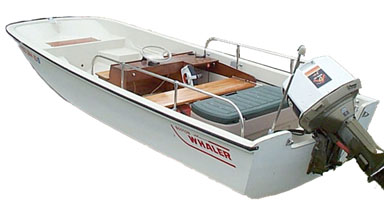

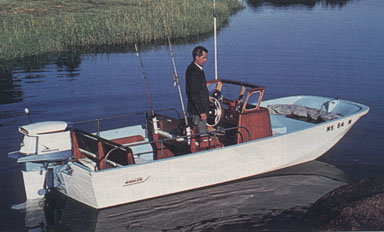









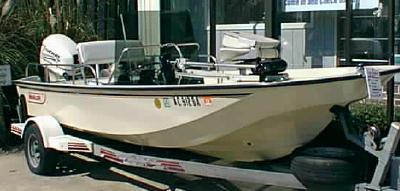

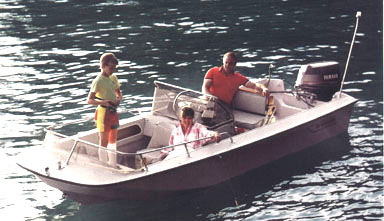

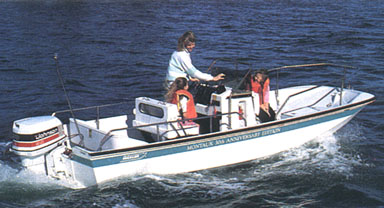














Comments